Analysis
A Buyer’s Guide to the Whitney Biennial: What You Need to Know About the Exhibition’s Brightest Rising Stars
We highlight nine artists in the 2019 Whitney Biennial, including the oldest and the youngest in the show.
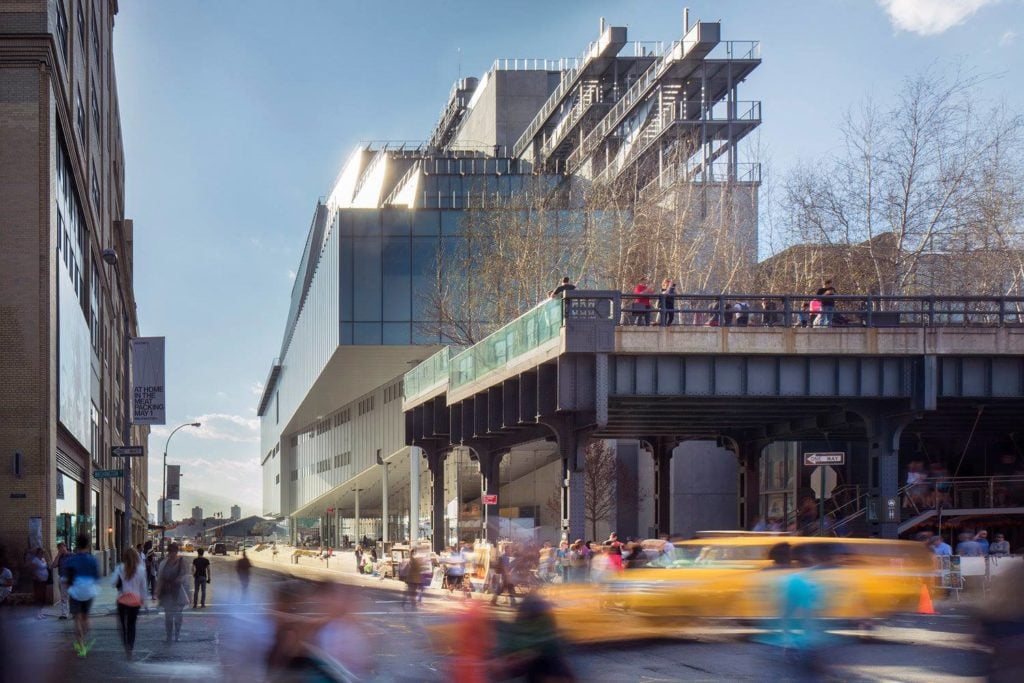
We highlight nine artists in the 2019 Whitney Biennial, including the oldest and the youngest in the show.

Caroline Goldstein &
Eileen Kinsella

The Whitney Biennial is officially open to the public, and like many of the sprawling biennials and triennials that have proliferated worldwide, it’s difficult to know where to start. This year’s iteration is organized by two veterans of the Whitney’s staff, Rujeko Hockley and Jane Panetta, who went to great pains to avoid shaping the exhibition around a particular theme.
The self-described “conceptually sprawling survey” does emphasize the presence of the artist’s hand—both literally, in the self-portraits of photographer Paul Mpagi Sepuya, whose hand is sometimes the only body part visible in his fragmented photographs—and figuratively, as in the work of Jeffrey Gibson, whose hand-crafted sculptural works embody what Hockley and Panetta describe as “less slick and more idiosyncratic.”

Curators Rujeka Hockley and Jane Panetta at the Whitney Museum.
All told, the lineup of more than 70 artists is extremely wide-ranging and younger than ever. And as at any biennial, collectors are looking as closely as curators and artists, seeking to divine rising stars. To help guide you through, we’ve selected nine artists who appear to be on the cusp of a breakthrough—whether they are relative unknowns poised to become critical darlings or more established names about to take an even bigger stage.
Our picks include both the oldest artist in the group, 84-year old Chicago-based artist Diane Simpson (who has three galleries representing her work in New York, Chicago, and London), and 28-year-old Ilana Harris-Babou, who does not yet have formal gallery representation. We then delved into their markets to provide a buyer’s guide to their most sought-after works.
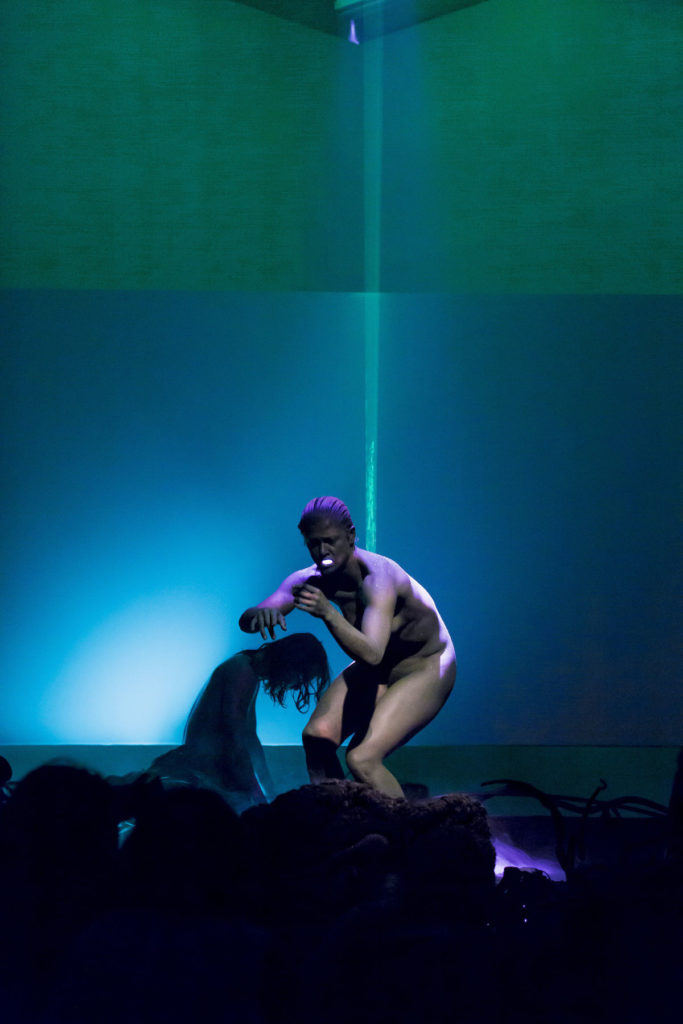
Korakrit Arunanondchai, Together with history in a room filled with people with funny names 4 (2017). Image courtesy the artist; boychild; CLEARING, NY/Brussels;Carlos/Ishikawa, London. Photo: Alexander Addington-White.
Based in: Brooklyn, New York and Bangkok, Thailand
Gallery affiliation: Carlos/Ishikawa (London), CLEARING (New York, Brussels), and Bangkok City City (Bangkok)
Best known for: His ongoing video series with variations on the name Painting with History in a room filled with men with funny names, which explores issues of history, authenticity, and self-representation. Arunanondchai’s fascination with denim is reflected in both his video installations and wall-based works, where it is frequently blasted or splattered with paint, sometimes as part of performance.
Most wanted: His “Untitled (History Paintings)” series, which consists of stretched denim that has been tie-dyed, burned, and then patched up with photos of the very flames that scorched them. His films, which often juxtapose found footage with performances by the artist’s frequent collaborator boychild, are also sought-after by institutions including the Whitney and the Fondation Louis Vuitton in Paris.
Price points: His paintings, films, and installations range from $45,000 to $150,000 on the primary market. Several works from the artist’s “History Paintings” series have also turned up at auction. To date, the highest price is just over $148,000 for a 2013 work sold at Christie’s London in 2015.
Up next: The artist has two major works in the central exhibition at the Venice Biennale and will be included in the upcoming Istanbul Biennial, which opens in September. Arunanondchai also has a solo show at Secession in Vienna, opening in September.
Little-known fact: Arunanondchai was a rapper before he attended the Rhode Island School of Design in Providence. He also has a twin brother who sometimes appears in his films.
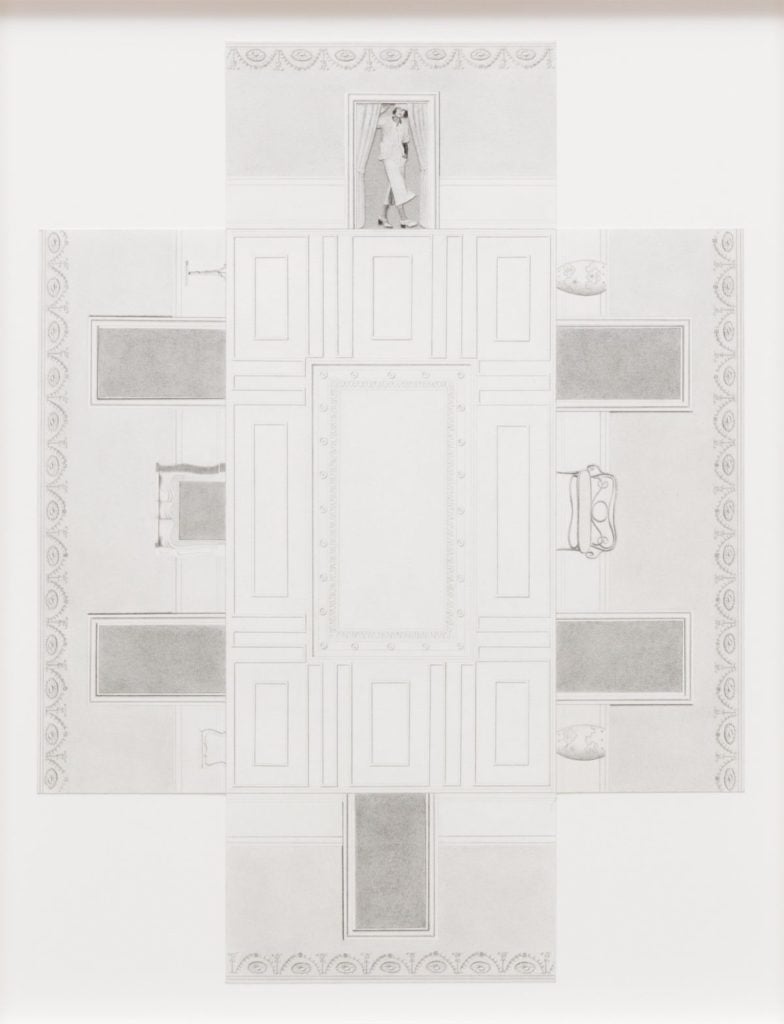
Milano Chow, Ceiling Plan with Walls I (2018). Courtesy of the artist and Chapter NY. Courtesy of the Whitney Museum.
Based in: Los Angeles, California
Gallery affiliation: Chapter Gallery (New York) and Mary Mary Gallery (Glasgow)
Best known for: Intricately detailed drawings made by combining precise graphite renderings of imaginary spaces and collaged photo transfers that evoke film noir and stage sets. Her layered compositions depict neither clearly exterior nor interior space, blurring the boundaries between private and public.
Most wanted: Graphite and photo transfer drawings on paper, framed wall works, accordion books, and more recently, new pop-up drawings.
Price points: From $3,000 to $10,000.
Up next: Three of her drawings are on view in “The Beyond: Georgia O’Keeffe and Contemporary Art” at the New Britain Museum of American Art through June 2.
Little-known fact: From 2011 to 2017, Chow ran her own press, called Oso Press. She made artist books with hip figures including Anthony Iacono, Nikholis R. Planck, Megan Plunkett, and Travess Smalley.
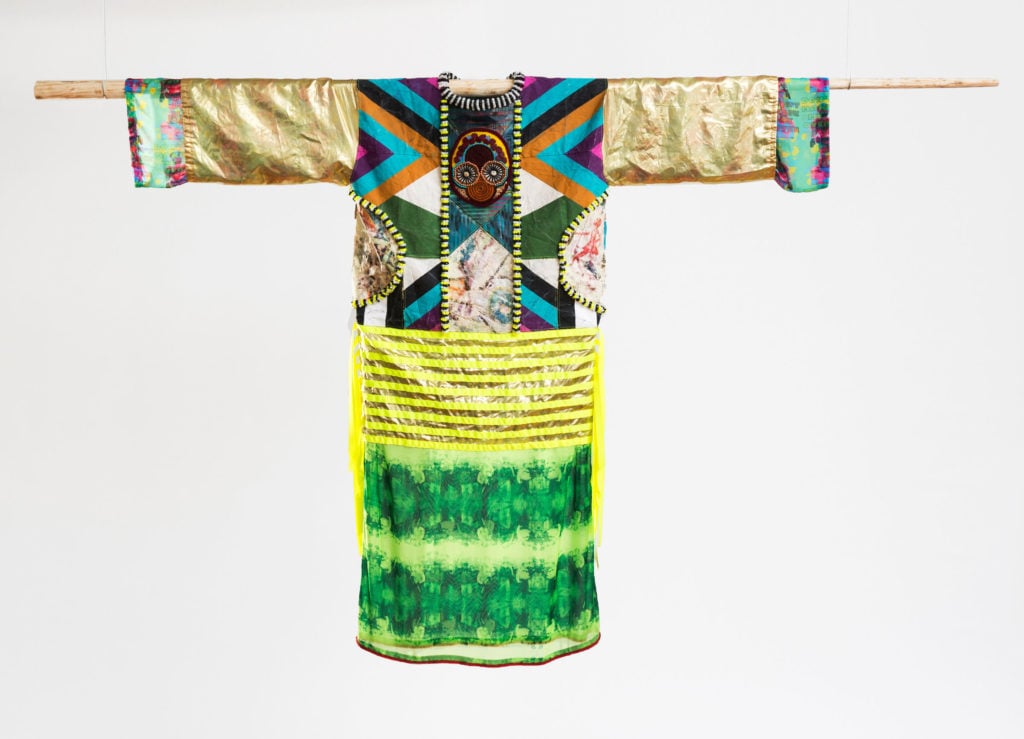
Jeffrey Gibson, Stand by Me (2018). Image courtesy Jeffrey Gibson Studio and the Whitney Museum. Photograph by Pete Mauney.
Based in: Brooklyn, New York
Gallery affiliation: Roberts Projects (Los Angeles), Kavi Gupta (Chicago), and Sikkema Jenkins & Co. (New York)
Best known for: Mixing materials rooted in Native American and Indigenous traditions with punk, pop, and other sub-cultural histories to address the way in which these voices have been excluded from the canons of modernism and contemporary popular culture. One is equally likely to encounter powwow regalia and elements of Modernist geometric abstraction in his work, which takes the form of sculpture, painting, performance, and video.
Most wanted: Collectors are most interested in his punching bags and paintings, while his garments are most sought-after by institutions.
Price points: Gibson’s glass bead-laden panels run from $30,000 to $220,000; garments are priced from $60,000. The artist’s top auction price, for a punching bag entitled White Power (2013), is $233,000, set at Christie’s New York in November 2015.
Up next: Gibson has a small show at the New Museum on view until June 9—and a very busy year ahead after that. Beginning this summer, he has solo shows at the Madison Museum of Contemporary Art (June 8–September 15); the Blanton Museum of Art at the University of Texas at Austin (July 14–September 29); and the Esker Foundation in Calgary, Canada (September 28–December 22). Come spring 2020, he will also have a solo show at the Brooklyn Museum.
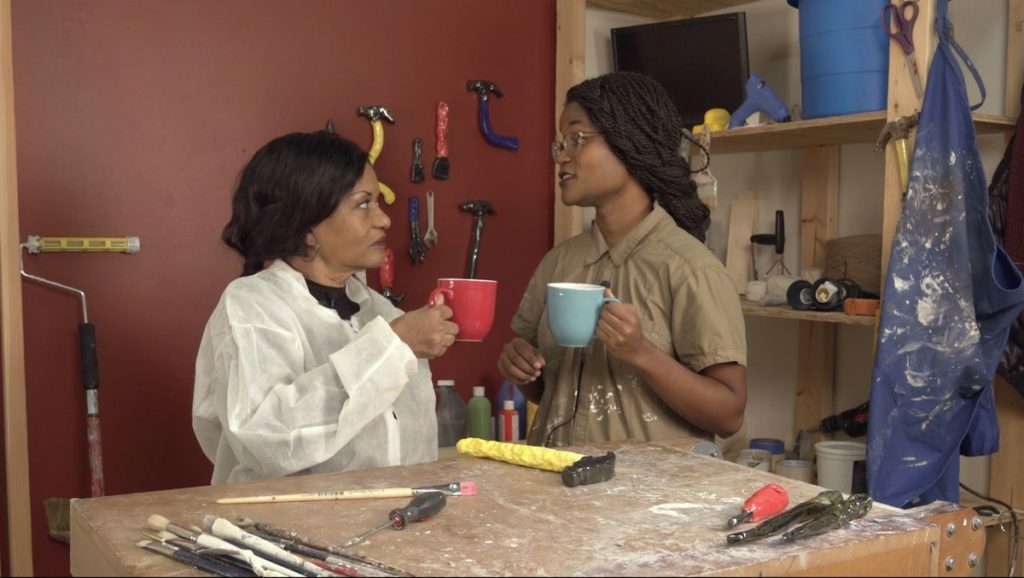
Ilana Harris-Babou, Finishing a Raw Basement (2017). Image courtesy of the artist and the Whitney Museum.
Based in: Brooklyn, New York
Gallery affiliation: No formal representation
Best known for: A work titled Reparation Hardware, which was originally commissioned by art collective DIS and exhibited at the Chinatown art gallery Larrie. The video and sculptural installation is part parody of a Restoration Hardware ad video, part furniture restoration tutorial, and part proposal for the delivery of reparations to African Americans. Harris-Babou is showing it at the Whitney along with a new work, Human Design, that expands further on the project.
Most wanted: Videos and ceramic sculptures
Price points: $10,000 to $20,000 for videos and under $9,000 for sculptures and works on paper.
Up next: A solo project, “Clean Lines,” runs from May 22 to September 8 at New York University’s 80WSE galleries. In early 2020, she will be showing a new body of work at Crush Curatorial in Chelsea.
Little-known fact: Human Design was filmed at RH New York—the expansive showroom operated by Restoration Hardware in the Meatpacking District, just a few blocks from the Whitney—as well as in Mexico and Senegal.
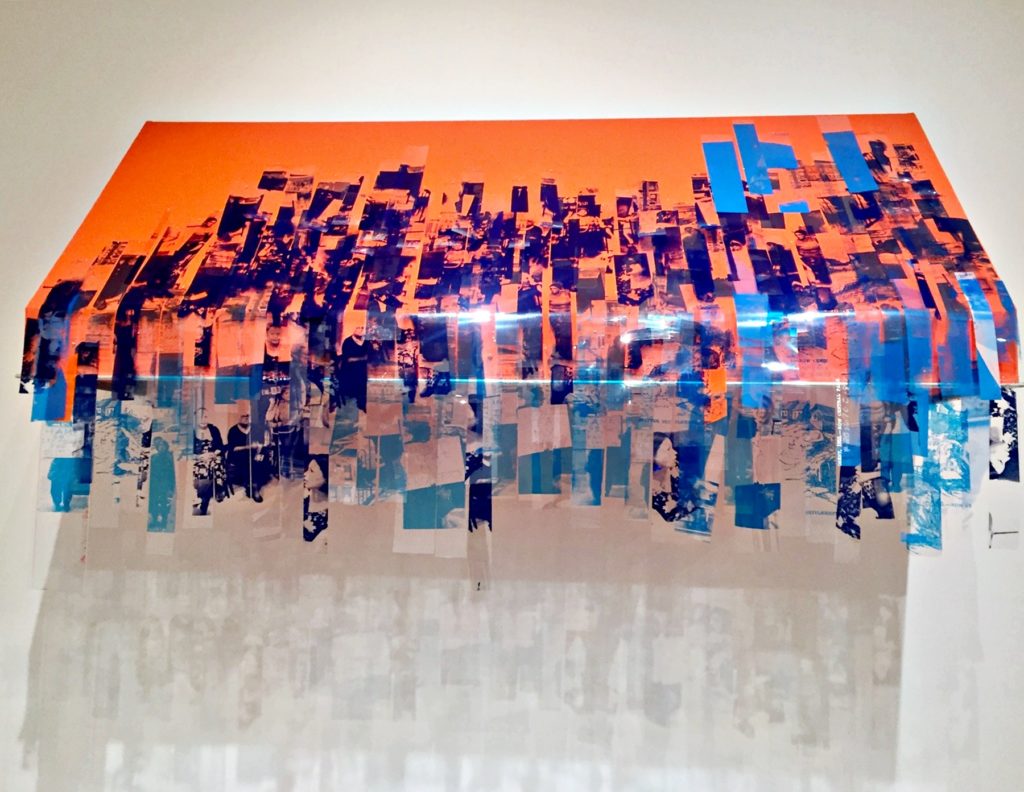
Tomashi Jackson, Third Party Transfer and the Making of Central Park (Seneca Village – Brooklyn 1853-2019) (2019). Image courtesy Ben Davis.
Based in: New York, New York and Cambridge, Massachusetts
Gallery affiliation: Tilton Gallery (New York). She will also show with Night Gallery (Los Angeles) this fall.
Best known for: Colorful, draped compositions that blend light, color, and transparency and are based on deeply researched investigations into subjects including school segregation, police brutality, and the use of eminent domain to displace African American people. She also works with video collage, photography, and performance.
Most wanted: Mixed-media paintings and monoprints
Price points: $7,500 for prints to $55,000 for the largest mixed-media works. The majority of her works are in the $20,000 to $40,000 range.
Up next: She will have a solo exhibition at the Parrish Art Museum in Water Mill, New York, next summer. Her work is currently included in Hinge Pictures: Eight Women Artists Occupy the Third Dimension at the Contemporary Arts Center New Orleans. Her latest body of work, based on research into how eminent domain has been used to displace African American communities in New York, is on view at Tilton through June 29.
Also worth knowing: While many artists use printmaking and drawing to prepare for larger works, Jackson considers them central to her practice.
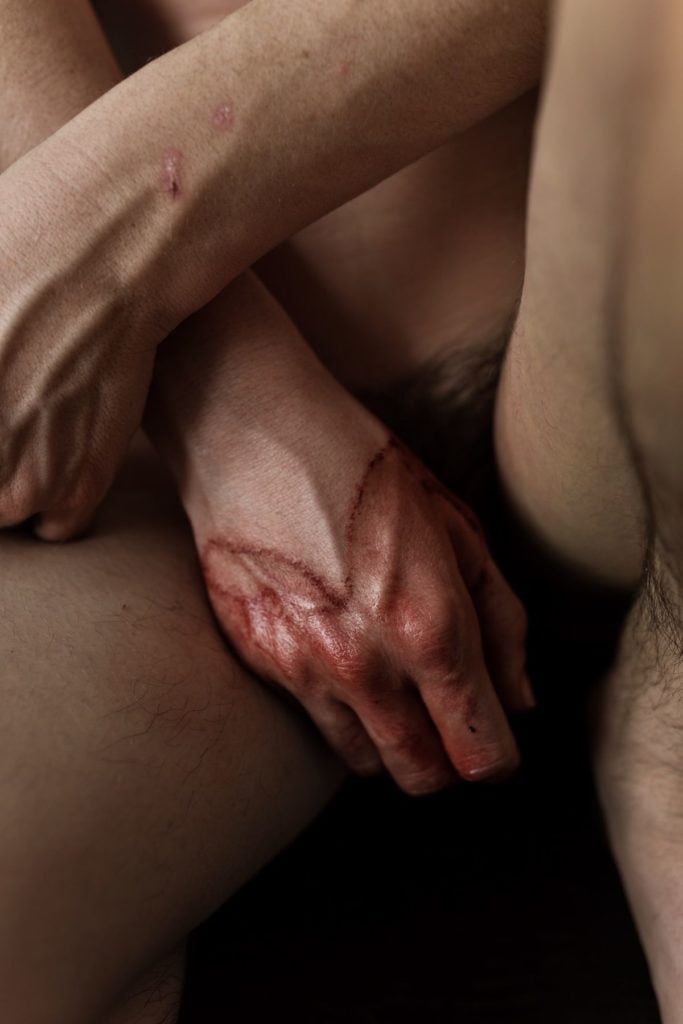
Elle Pérez, Dick (2018). Image courtesy the artist and 47 Canal, New York. Courtesy of the Whitney Museum.
Based in: Brooklyn, New York
Gallery affiliation: 47 Canal (New York)
Best known for: Unflinching and intimate photographs that explore the fluidity of gender and identity, especially within the queer and Latinx communities in their native New York. Pérez first came to prominence for photographs of Black and Latino athletes active in the Bronx’s underground wrestling leagues.
Most wanted: Intimate portrait photographs, which have been compared to the early works of Catherine Opie.
Price points: Under $12,000
Up next: You’ll be able to see Pérez’s work on the move come August, when a new Public Art Fund commission “Elle Pérez: from sun to sun” hits New York City bus shelters.
Also worth knowing: Pérez’s first solo museum show was held at MoMA PS1 last fall, mere months after their first-ever solo show at 47 Canal.
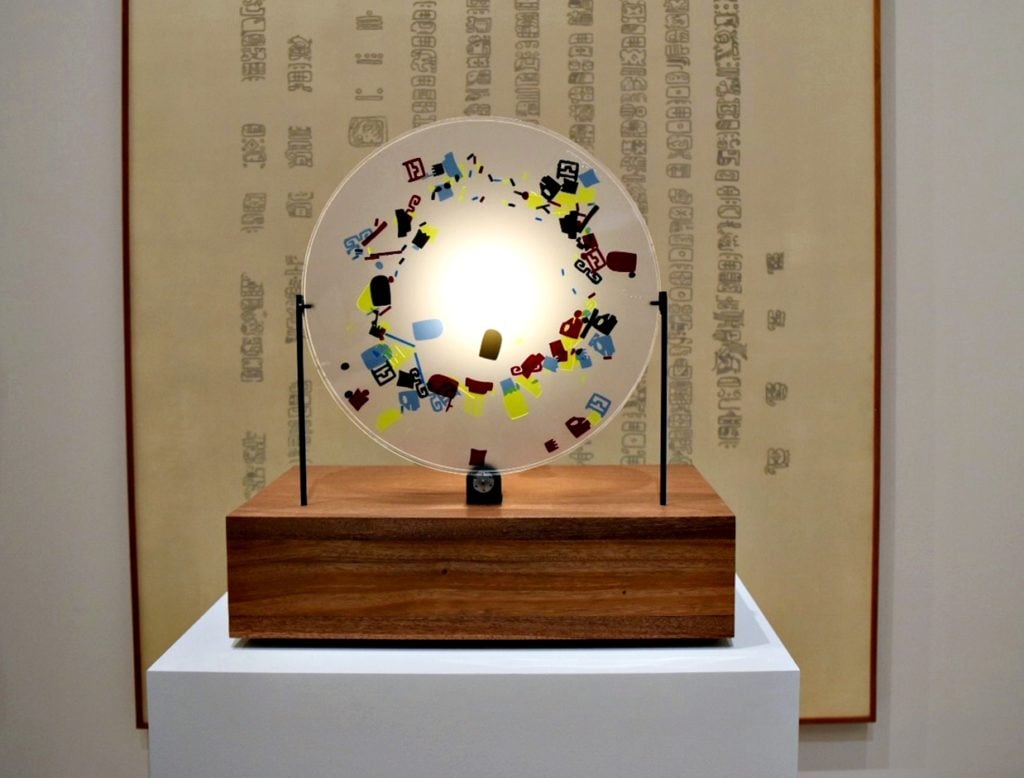
Installation view of works by Gala Porras-Kim, image courtesy of Ben Davis.
Based in: Los Angeles, California
Gallery affiliation: Labor (Mexico City) and Commonwealth and Council (Los Angeles)
Best known for: Porras-Kim was born in Bogota to a Colombian father and Korean mother, both academics whose practices had a profound influence on her work. Through drawings, sculptures, and installations, the artist dives into the history of objects in museum collections, tracing their provenance and considering what they mean in society today. Her work in the Whitney Biennial is inspired by La Mojarra Stela 1—a stone carved with the untranslatable characters of Epi-Olmec script that was discovered in 1986 and is now in the collection of El Museo de Antropología de Xalapa in Veracruz, Mexico.
Most wanted: Series and sequences of graphite-and-Flashe-paint drawings on paper, as well as vessels and ceramics.
Price points: Between $5,000 and $50,000
Up next: This fall, she is participating Ural Industrial Biennial in Russia, curated by Xiaoyu Weng of the Guggenheim (September 12–December 1). She will also have a solo show at MOCA Los Angeles as part of its “Open House” series, which spotlights Angeleno-based artists, from October 27 to March 30, 2020.
Also worth knowing: The artist has political asylum, and holds an extensive collection of four, five, and six-leaf clovers.
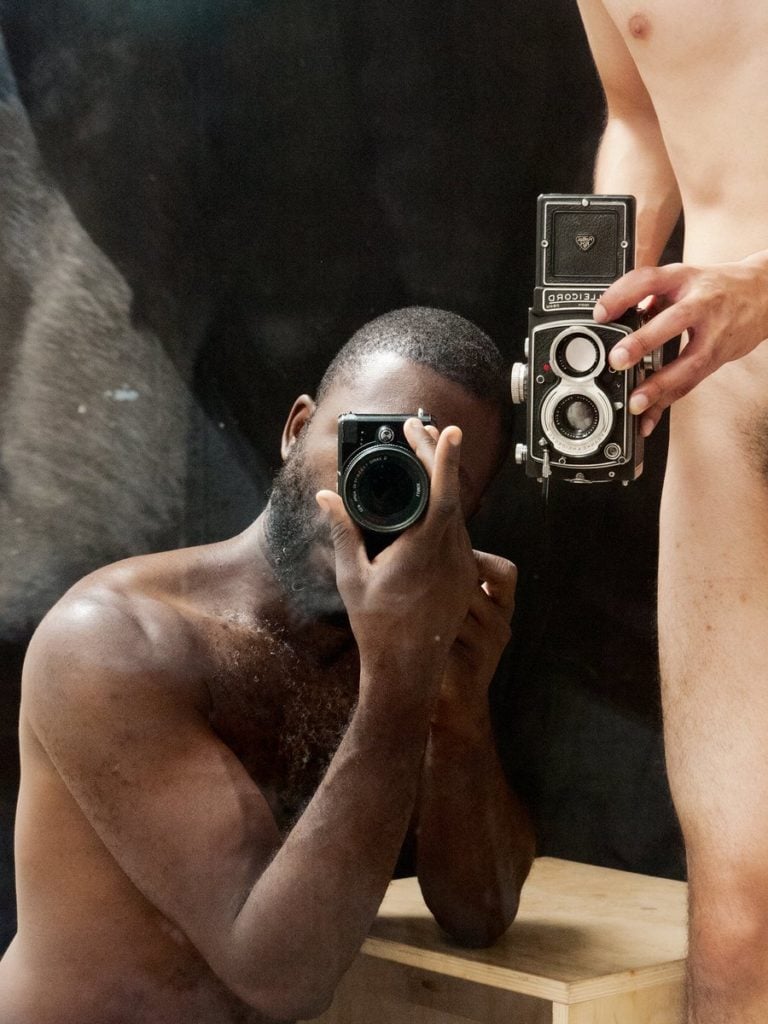
Paul Mpagi Sepuya, Darkroom Mirror (_210085) (2017). © Paul Mpagi Sepuya.
Based in: Los Angeles, California
Gallery affiliation: Team Gallery (New York); Document (Chicago); and Susanne Vielmetter (Los Angeles)
Best known for: Highly orchestrated photographs that show bodies in fragments and are developed in close collaboration with his subjects. Sepuya’s dealer Jose Freire notes that he is one of a number of artists in his generation seeking to deconstruct photographic traditions and transform the practice into a communal, rather than solo, endeavor. The artist has gained considerable traction in the past few years, although he has been working for a decade, with appearances in the shows “Double Enclosure” at the Fotomuseum in Amsterdam, “Being: New Photography” at the Museum of Modern Art in New York, and “Trigger: Gender as a Tool and a Weapon” at the New Museum in 2017 and 2018.
Most wanted: Works from the artist’s “Darkroom Mirror” series—mystifying, fragmented compositions taken in a mirror that contain the reflection of the camera, the photographer’s own body, and slices of other photographs or forms—are most sought-after. A work from the series was on the cover of Artforum‘s March issue.
Price points: Sepuya’s photographs are produced in editions of five and range in price from $4,000 to $11,000. His smallest photographs measure 9 x 13 inches; his largest, 75 x 50 inches. His most desired works are of mid-size, measuring 51 x 34 inches.
Up next: Sepuya’s first major museum survey is on view at the Contemporary Art Museum St. Louis through August 18, before traveling to the Blaffer in Houston. His work will also be included in the second half of the Guggenheim’s Mapplethorpe show, opening in July, as well as a show on contemporary portraiture at the Getty, which opens in September.
Also worth knowing: In New York City alone, over an 18-month period, Sepuya will have shown his work at the New Museum, the Museum of Modern Art, the Whitney, and the Guggenheim.
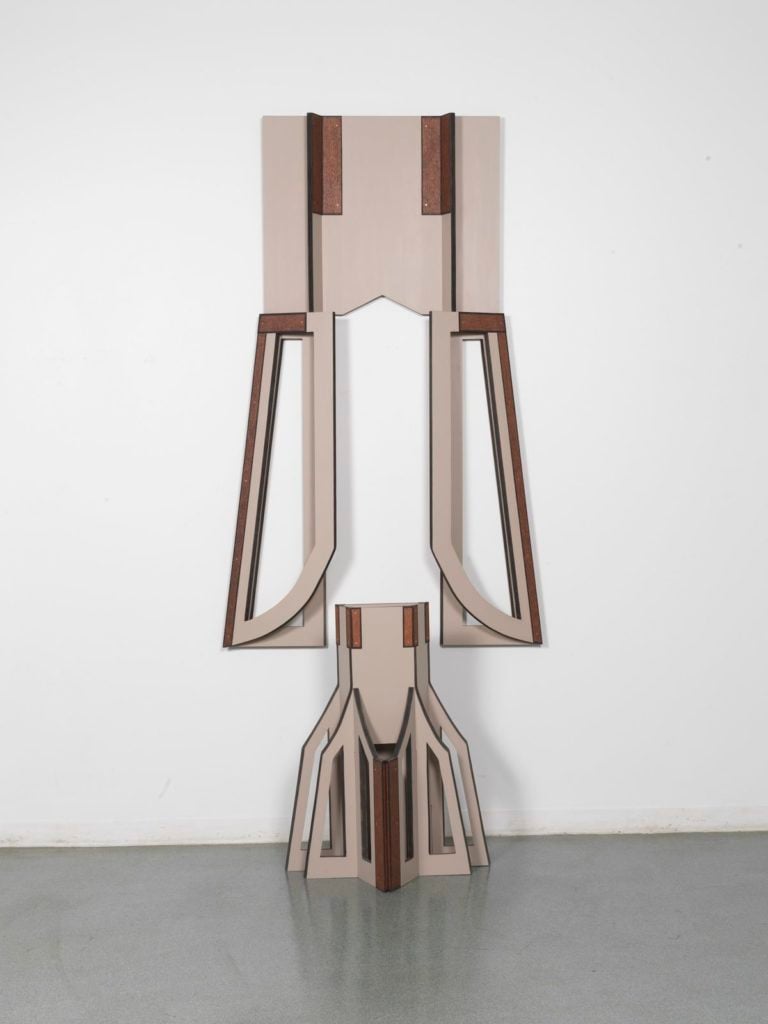
Diane Simpson, Lambrequin and Peplum (2017). Image courtesy the artist; Corbett vs. Dempsey, Chicago; JTT, New York; and Herald Street, London. Photograph by Tom Van Eynde.
Based in: Chicago, Illinois
Gallery affiliation: JTT Gallery (New York), Corbett vs. Dempsey (Chicago), and Herald Street (London)
Best known for: Spare, subtle sculptures inspired by architecture and garment construction. Simpson, who is the oldest artist in this millennial-heavy biennial, “is probably best known for her ability to integrate clothing patterns and architectural forms into almost theatrical tableaux,” according to JTT founder Jasmin Tsou. Tsou describes it as a “bold decision” for Simpson to turn her practice toward sculpture in the early 1980s, a time when the Chicago Imagists “nurtured a very painting-centric community in Chicago.”
Most wanted: Simpson’s “Samurai” series from the 1980s is inspired by samurai armor—and more specifically, a scene in Akira Kurosawa’s 1980 film Kagemusha, which captures warriors seated during a ceremony. She makes preparatory sketches and detailed drawings for her finished installations; both the sketches and final product are in the collections of the Art Institute of Chicago and the Museum of Contemporary Art, Chicago, among other institutions.
Price points: The architectural-style sketches for large-scale works run between $5,000–8,000.
Up next: Simpson is designing costumes for a performance called “Diane Simpson: Architecture in Motion,” organized by Sara Cluggish on June 1 at the Fuller Manufacturing Building in Minneapolis.